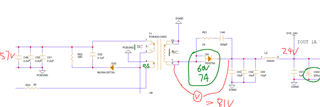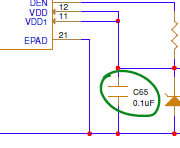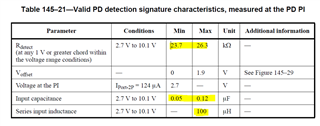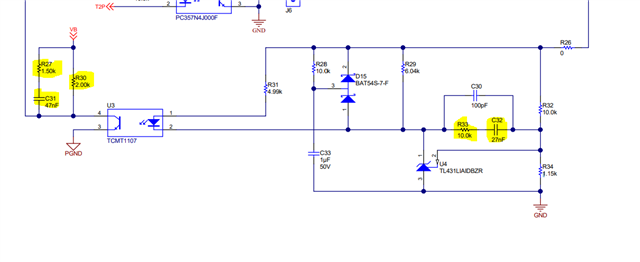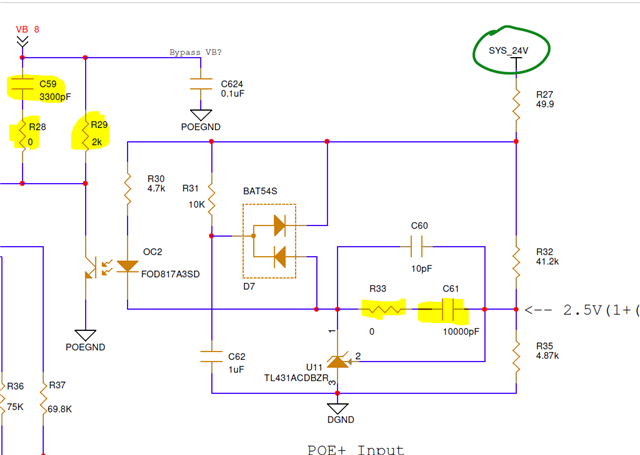Other Parts Discussed in Thread: PMP22301
Tool/software:
Hello,
The POE+ power supply I have designed following the data sheet etc., for the TPS23754, when connected to a POE++ (Injector) supply of about 56V will pulse and seems to think it is overcurrent. However, when I connect to a POE+ supply (switch) of about 48V it will boot up normally. I have used the POE++ injector, POE+ switch, and various others with other designs and no issues.
The power supply provides the required voltage, 24 VDC, and my target output power when loaded with audio on POE+.
However, the supply seems to think when connected to the POE++ injector that there is either an over voltage or over current. It "hiccups" and repeatedly restarts. This is at minimum load of about 250mA, we're powering a Beagle Bone Black clone pcba with a 25W Class D TI amp, an ADAU1452 DSP, 5 op amps, and an ethernet Phy chip.
Classification resistor is 63.4 ohms.
Schematic attached.
Thank you!


